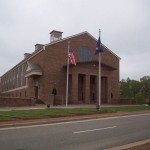6 Suggestions For Homeowners Associations To Mitigate Their Exposure to Potential Liability
A recent case reported in Virginia Lawyers Weekly highlights the significant financial risk to homeowners associations (“HOAs”) when sidewalk maintenance is neglected. In this case, a resident tripped on an uneven sidewalk—maintained by the HOA—and suffered severe injuries. The injuries required surgery and 10 months of treatment, resulting in $200,000 in medical expenses. The plaintiff also lost valuable time from their online retail business. Ultimately, the case was settled for $650,000 before a lawsuit was even filed.
This scenario serves as a reminder HOAs to evaluate their responsibilities under their governing documents. Here are several steps HOAs can take to reduce liability and protect their communities from similar claims:
1. Conduct Regular Inspections
HOAs should establish a schedule for inspecting sidewalks and other common areas. Look for hazards such as uneven pavement, cracks, and other trip-and-fall risks. Inspections should be documented, as records can serve as evidence of diligence in case of a claim.
2. Prioritize Repairs Promptly
When issues are identified, repair them as soon as possible. In the case mentioned, the sidewalk had a two-inch height discrepancy—a tripping hazard that could have been addressed through grinding, leveling, or slab replacement. Delaying repairs increases the risk of accidents and makes claims harder to defend.
3. Enhance Lighting
Poor visibility can exacerbate sidewalk hazards. Installing streetlights or sidewalk lights can help residents navigate safely at night and deter potential accidents. Lighting improvements are a relatively small investment compared to the cost of a personal injury claim.
4. Consider Risk Transfers
HOAs should review their insurance policies to ensure adequate coverage for premises liability. Additionally, HOAs may consider hiring third-party contractors for sidewalk maintenance and ensuring these contractors carry proper insurance.
5. Communicate with Residents
Encourage residents to report hazards promptly. Open communication creates a partnership between the HOA and the community to maintain safety.
6. Consult Legal Counsel
If your HOA is unsure about its responsibilities or how to implement these steps, consult an attorney experienced in HOA law. Proactive legal advice can help reduce risk and ensure compliance with applicable regulations.
Lessons from the Case
This $650,000 settlement underscores how expensive negligence can be. By implementing regular maintenance schedules, prioritizing safety improvements, and ensuring proper insurance coverage, HOAs can mitigate these risks. Taking proactive measures is not just about avoiding lawsuits; it’s about creating a safe and welcoming community for all residents.
Holiday Lights and your HOA

The Virginia Supreme Court has issued another ruling specifying the limitations of homeowners associations to enact guidelines, rules, and regulations that exceed the scope of their authority.
We had written previously about attempts by HOAs to regulate holiday decorations. The first item on our suggested checklist to assist homeowners association was “Does the Board have the authority to regulate holiday decorations? If not, your inquiry stops here.” As it turns out, that is the basis for the Court’s decision in Sainani v. Belmont Glen Homeowners Association.
In Sainani, the association adopted guidelines for “Seasonal Holiday Decorations” (the “Guidelines”) to regulate various aspects of homeowners’ display of exterior lighting. The trial court found that the homeowners violated the Guidelines by having the “lights . . . on 24/7” for “at least 300 days a year.”
On appeal, the homeowners argued that the Guidelines exceeded the HOA’s authority and were unenforceable. The Virginia Supreme Court agreed. In essence, the Court specifically stated that “None of the covenants in the amended declaration can be construed to authorize the seasonal guidelines, and thus, the seasonal guidelines exceed the scope of the HOA’s authority.”
As we wrote in another blog post analyzing an unpublished order from the Virginia Supreme Court in the case of Shadowood Condominium Association et al., v. Fairfax County Redevelopment and Housing Authority, “Unless the . . . governing documents specifically permit the common interest community to impose the charges and/or suspension of rights for violations of the documents . . . it is likely that a court may find against the association where the owner contests such actions.” The Sainani case will have ramifications for HOAs who do not follow those guidelines.
HOAs and Transition from Developer Control – 101
Owners in most community associations—both homeowner associations and condominium associations—eventually reach the point where the developer transfers control of the Board of Directors to the owners. This blog post provides an introduction to the transition process and what owners can expect.
Continue reading “HOAs and Transition from Developer Control – 101”
HOA Litigation: Is it avoidable?
We have written previously on the costs—both in time and money—for homeowners and condominium associations to litigate cases. On one hand, boards of directors have a fiduciary duty to uphold the governing documents of associations, but on the other, the board must investigate alternatives to the divisive nature of litigation.
As it turns out, sometimes there is no alternative because a homeowner can sue an HOA, forcing the association to defend. But what efforts can or should a homeowners or condo association take to avoid the consequences of litigation?
A series of recent Virginia cases highlights the consequences associations can face in litigation cases. This blog posts provides a brief summary of those cases and some cautionary advice.
Make sure HOA Document Amendments are properly certified
The Virginia Supreme Court’s opinion in Tvardek, et al v. Powhatan Village Homeowners Association, Inc. highlights how critical it is to not only amend your HOA documents in compliance with the law and your existing documents, but to make sure that the amended document that gets recorded properly memorializes that you did so.
The Tvardeks filed a declaratory judgment action in 2013 against Powhatan Village Homeowners Association, Inc. (“Powhatan Village”) to challenge a 2008 amendment to the association covenants that included a provision restricting the owners’ ability to rent their homes. Powhatan Village filed a special plea in bar requesting dismissal of the action as untimely citing the one-year statute of limitations in Va. Code Ann. § 55-515.1(E). Declining to hear any evidence, the Circuit Court made a decision on the pleadings and argument of counsel, ruling in favor of Powhatan Village’s argument that the claim was time-barred. The Circuit Court also awarded Powhatan Village $12,000 in attorney fees.
The Tvardeks appealed the case. The Virginia Supreme Court reversed the Circuit Court’s ruling, determining that the case was not barred by the one-year statute of limitations. The attorney fee award was also reversed.
Continue reading “Make sure HOA Document Amendments are properly certified”
Virginia HOAs and Olde Belhaven – Guest Post on Construction Law Musings
Once again, my friend and colleague, Richmond Construction Law attorney Chris Hill, permitted me the opportunity to blog at his award-winning blog Construction Law Musings. You can get a lot of great information on construction law, including the intricacies of mechanic’s liens, from Chris and his blog. You can also follow him on Twitter, @ConstructionLaw.
For Chris’ blog, we wrote a post exploring the Olde Belhaven case that made it into the national media. Our take is that we must remember that HOA Governing Documents are drafted by counsel for the developers, and when the developers leave, the enforcement of those restrictions is left to the volunteer Boards of Directors of your neighborhood.
Here’s a brief excerpt of the post:
A recent case highlights what happens when an Association’s Board of Directors, trying to uphold its fiduciary duty by enforcing and upholding its governing documents goes head to head with homeowners, both believing that they are in the right. . . .
Our experience is that the volunteer Boards of Directors, when faced with tough choices, try to make decisions consistent with their fiduciary duties, in an attempt to protect the rights of all the owners in the neighborhood. That doesn’t mean they always make the right decisions, but these ordinary people are not ogres, either.
Read the complete blog at Construction Law Musings, as well as many other informative posts on Chris’ outstanding blog. Thanks, Chris!
HOAs and Management Companies – Does your contract say what you think it says?
Many boards of directors for community associations engage management companies to help the board operate their community. These relationships arise from written contracts negotiated by the parties. It is essential that homeowners’ associations and management companies have their contracts reviewed by their experienced HOA attorney.
When determining the terms of a contract, Virginia courts employ what is known as the “plain meaning” doctrine. This doctrine basically means that when an agreement is clear, a court will look to the ordinary meaning of the words of the contract itself. Consequently, the parties need to ensure that all of the terms they believe are part of an agreement are in the written contract itself.
A recent Virginia Supreme Court case presents a prime example of why it is important to have your association attorney review contracts between community associations and management companies. Continue reading “HOAs and Management Companies – Does your contract say what you think it says?”
Benefits of HOAs Part 4: What do homeowners really think about their associations?
We’ve mentioned already the abundance of news articles criticizing community associations. If these news stories are to be believed, then associations are unpopular indeed. But is it true that residents living in community associations are unhappy with their association? Research by the Community Associations Institute suggests that it is not. In fact, the research suggests that more people than ever are choosing to live in communities with associations, and the overwhelming majority of those people are happy with their association.
Statistics compiled by the Community Associations Institute show that the number of associations continues to grow. In 1970, just ten thousand communities, with a combined 2.1 million residents, were governed by associations. Today there are over 309,000 communities governed by associations. More than 62 million Americans live in associations. 1.75 million volunteers serve on community association boards, and a full 26 percent of the eligible U.S. population volunteers for an association at some point during a year, according to one estimate. That kind of service simply would not happen if associations were as widely disliked as has been portrayed.

Common Interest Communities
Benefits of HOAs Part 2: How is Covenant Enforcement Good for Owners?
The enforcement of covenants, conditions, and restrictions (“CC&R’s”) is among the most criticized of the duties performed by the Board of Directors of community associations, but is also the most important responsibility. CC&R’s govern many activities in a community including house designs, parking regulations, maintenance and repair of the common areas, and collection of assessments. Sensational “Gotcha” type news stories highlight enforcement practices of some associations, which contribute to a false perception that associations in general lack common sense. However, studies repeatedly show that the overwhelming majority of people living in neighborhoods governed by HOAs believe that the rules in their communities benefit them.
Continue reading “Benefits of HOAs Part 2: How is Covenant Enforcement Good for Owners?”
Part 2 on Virginia’s Unauthorized Practice of Law Rules and HOAs – What is considered the unauthorized practice of law?
We blogged previously about finding guidance in Virginia’s rules on the unauthorized practice of law as they pertain to community associations. In this post, we will review Virginia opinions that address whether certain work performed by managers is the unauthorized practice of law (“UPL”).







